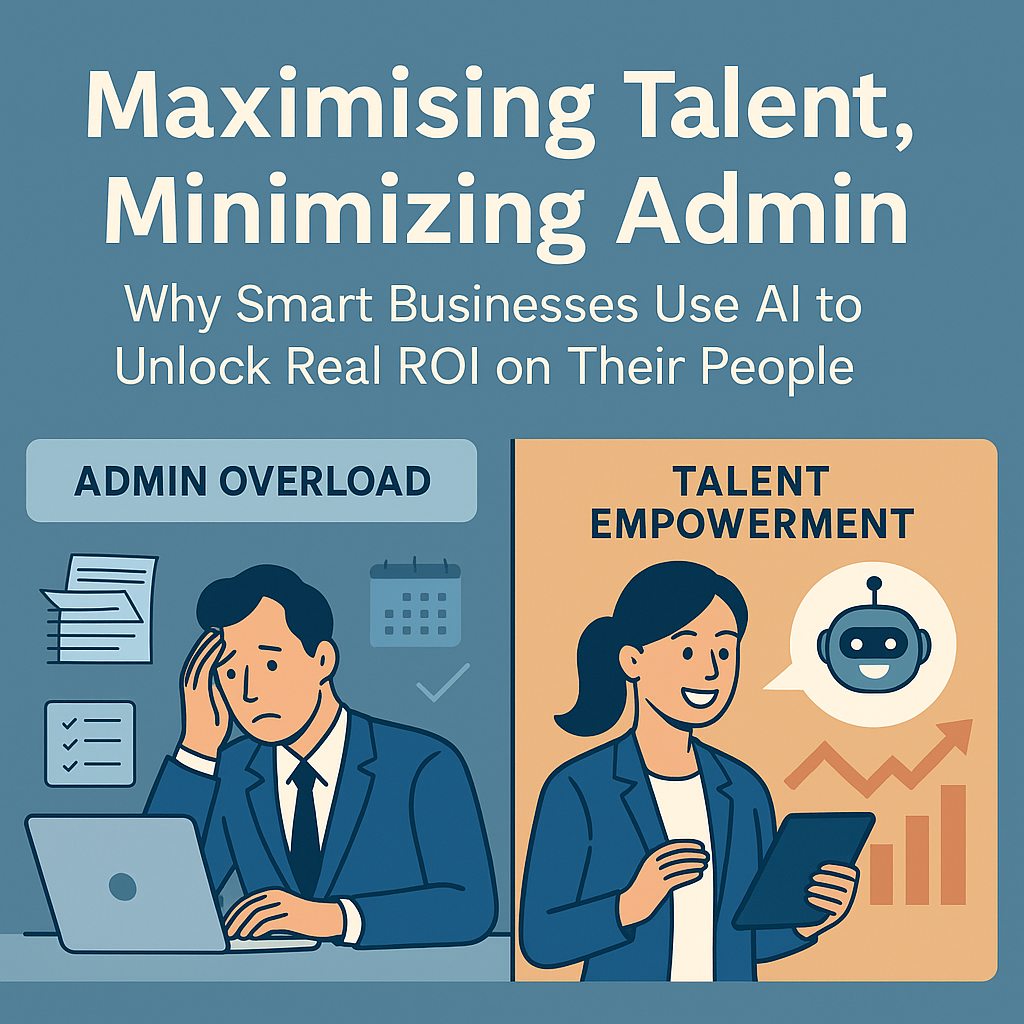Approx reading time: 4 mins 38 sec
This is the intro to our series on digital marketing tools. You can check out the other parts below:
Setting the Stage: Enhancing Marketing Efficiency with Smart Tools
Part 1: Revolutionising Marketing Automation – Smarter Strategies for Better Results
Part 2: The Art of Visual Storytelling – How Design Tools Shape Marketing
Part 3: Data-Driven Decisions – Analytics for Marketing Precision
Part 4: Personalising Audience Engagement – The Role of Email Marketing Tools
Synthesising Success: Integrating Tools for Optimal Marketing Efficiency
Introduction
The role of digital marketing has evolved from advantageous to essential. The latest technology has transformed the way businesses approach marketing, enabling strategies that are more targeted, efficient, and effective. From automating mundane tasks to delivering deep insights into customer behaviour, these tools are redefining the boundaries of what's possible in marketing.
Series Introduction
Welcome to "Elevating Marketing Efficiency: The Power of Smart Marketing Tools," a comprehensive blog series dedicated to exploring the transformative impact of smart tools in marketing.
This series is tailored to shed light on how these innovative solutions are changing the face of marketing, offering unprecedented opportunities to boost efficiency and effectiveness.
Objective
In this series, our journey will take us on an in-depth exploration of various smart marketing tools, each with its unique capabilities and benefits.
We aim to uncover how these tools not only simplify and streamline marketing processes but also open new avenues for engagement, analytics, and personalisation. Our objective is to provide you with valuable insights into how these tools can be used to enhance your marketing strategies, driving efficiency and success in your campaigns.
The Evolution of Marketing Tools
Historical Perspective
In the early days, marketing was predominantly about physical advertisements – billboards, print media, and face-to-face sales tactics. As technology advanced, so did the tools of the trade. Radio and television brought about a new era of mass marketing, enabling brands to reach wider audiences more efficiently than ever before.
The Digital Shift
The advent of the digital age marked a significant turning point. The internet shifted how businesses interact with their audiences. Digital tools have brought about a level of precision and personalisation that was unimaginable in the era of traditional media.
Today, we have at our disposal a suite of sophisticated tools – from social media platforms and SEO optimisation to AI-driven analytics and automated email marketing systems. These digital advancements have changed the tools we use and transformed the very fabric of marketing strategy. The focus now is on targeted, data-driven campaigns that speak directly to the individual needs and preferences of consumers, making marketing efforts more effective and efficient.
This shift towards digital tools is not just a trend; it's a fundamental shift in the way businesses understand and engage with their market. With these evolving tools, marketers can now craft strategies that are creative and deeply rooted in analytics, ensuring every decision is informed by data.
Preview of the Series
In this series, we'll investigate the landscape of smart marketing tools, uncovering how each one can give a huge boost to your marketing efficiency.
Part 1: Revolutionising Marketing Automation
We'll dive into the world of marketing automation tools, revealing how they're helping businesses approach their marketing strategies. From streamlining operations to enabling more targeted and personalised campaigns.
Part 2: The Art of Visual Storytelling
Here, we'll explore the transformative power of graphic design tools in marketing. We'll see how they enable brands to tell compelling stories, connect emotionally with audiences, and convey complex messages through captivating visuals.
Part 3: Data-Driven Decisions
This part will focus on the critical role of analytics tools in marketing. We'll discuss how these provide invaluable insights, driving precision in marketing campaigns and helping businesses make informed, data-driven decisions.
Part 4: Personalising Audience Engagement
We will delve into the realm of email marketing tools, examining how they allow for personalised communication with audiences. This segment will highlight how tailoring messages to individual preferences and behaviours can significantly enhance audience engagement.
Part 5: Streamlining Social Media
In this section, we'll discuss the significance of social media management tools. We'll explore how they not only simplify the management of social media campaigns but also amplify engagement and interaction with audiences across various platforms.
Part 6: Optimising for Visibility
This part will shed light on the crucial role of SEO tools in enhancing digital visibility. We'll explore strategies for boosting online presence, ensuring that businesses are seen and are resonating with their target audience.
Part 7: Navigating the AI Wave
Here, we'll venture into the exciting world of AI in marketing. We'll examine how AI tools are enhancing efficiency and bringing transformative potential to marketing strategies, opening new avenues for innovation and engagement.
Each part of this series is designed to provide you with a deeper understanding of the various tools available and how they can help take your marketing efficiency to new heights.
Challenges and Best Practices
Addressing Challenges
Adopting smart tools in marketing doesn’t come without challenges, which can vary depending on the size of the business, the skill level of the team, and the specific marketing goals.
- Learning Curve and Training: Implementing advanced tools often requires a learning curve. Teams need to be trained not only in how to use these tools but also in how to interpret the data and insights they provide.
- Integration with Existing Systems: Many businesses face challenges in integrating new tools with their existing marketing systems and processes. Compatibility and data migration can be significant hurdles.
- Data Privacy and Security: With the increasing use of data-driven tools, concerns around data privacy and security become paramount. Businesses must navigate the complexities of protecting customer data while leveraging it for marketing insights.
- Keeping Up with Rapid Technological Changes: The fast-evolving nature of technology means that tools can quickly become outdated. Staying current with the latest advancements can be challenging.
Best Practices for Integration
Effectively integrating tools into your marketing strategy requires a thoughtful approach, balancing technological capabilities with practical marketing goals.
- Start with a Clear Strategy: Before adopting any tool, have a clear understanding of your marketing objectives. Choose tools that align with these goals and complement your existing marketing efforts.
- Pilot Before Full Implementation: Test the tools on a small scale before rolling them out across your entire marketing operation. This allows you to gauge their effectiveness and make necessary adjustments.
- Invest in Training: Ensure your team is adequately trained to use the tools. This might involve formal training sessions, online courses, or learning from experienced users.
- Focus on Data Quality: Quality data is key to the success of any smart tool. Invest time in ensuring your data inputs (and subsequent outputs!) are accurate and relevant.
- Regularly Review and Adapt: Periodically review the performance of the tools and be ready to adapt your strategy. This includes staying updated with new features and updates to the tools.
- Prioritise Security and Compliance: Be vigilant about data security and privacy. Ensure that the tools you use comply with relevant data protection regulations.
Conclusion
As we wrap up this introductory exploration into the world of smart marketing tools, it’s clear that these technologies are more than just fleeting trends; they are pivotal in reshaping the landscape of modern marketing. Their ability to enhance efficiency, personalise experiences, and provide actionable insights is super important for growing businesses.
Up Next
In our next instalment, "Part 1: Revolutionising Marketing Automation – Smarter Strategies for Better Results," we're going to dive into the dynamic world of marketing automation tools.
Get ready to discover how these tools are automating tasks, and changing the way we approach marketing strategies. From nurturing customer relationships to streamlining campaign management and personalising customer experiences, we'll uncover the impact these tools have on marketing efficiency.









